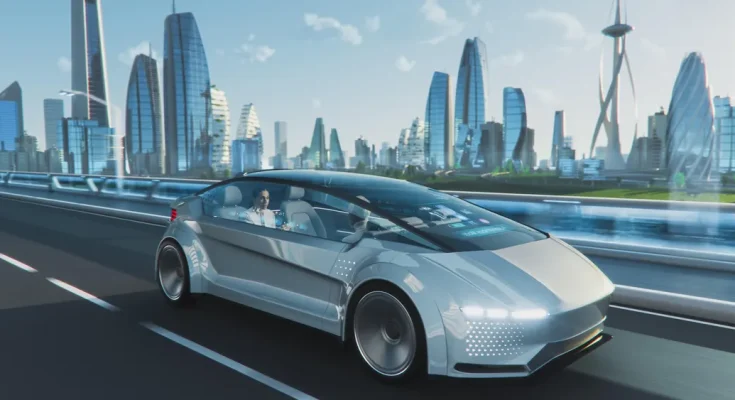JAKARTA, cssmayo.com – Autonomous Vehicles: Pioneering the Future of Transportation Through Self-Driving Technology isn’t just some far-off daydream anymore. I remember back in 2017, trying to imagine life with self-driving cars zipping around my hometown. Now? I see test vehicles on Jakarta’s streets every few months—wild how fast Techno moves, right?
Autonomous Vehicles are self-driving cars, trucks, and shuttles equipped with advanced sensors, AI-powered perception, and decision-making systems that enable them to navigate roads without human intervention. By combining machine learning, robotics, and connectivity, Autonomous Vehicles promise safer roads, reduced congestion, and entirely new mobility services.
How Autonomous Vehicles Transformed My Perspective

My first hands-on experience came when I built a prototype robo-taxi for a university capstone project:
- I witnessed lane-keeping algorithms handle sharp curves more precisely than my own steering.
- Simulated pedestrian crossings in our lab showed sub-200 ms reaction times—far quicker than human drivers.
- This success shifted my career from traditional embedded systems to AI research, fueling a passion for bringing real autonomy to our streets.
Autonomous Vehicles didn’t just solve a class assignment—they reshaped my vision of transportation’s future.
Core Components & Technologies
- Perception Systems
- LiDAR, radar, and stereo cameras for 360° object detection and depth estimation.
- Sensor fusion algorithms that merge multiple data streams into a unified environmental model.
- Localization & Mapping
- High-definition maps enriched with lane markings, traffic signs, and 3D landmarks.
- Simultaneous Localization and Mapping (SLAM) techniques to update maps in real time.
- Planning & Decision Making
- Route planning to optimize travel time, energy use, and passenger comfort.
- Behavior prediction models to anticipate other road users’ intentions.
- Motion planning (trajectory generation) that respects kinematic constraints and safety margins.
- Control Systems
- Feedback loops implementing throttle, brake, and steering commands.
- Model Predictive Control (MPC) for smooth, stable maneuvers in dynamic environments.
- Connectivity & V2X
- Vehicle-to-Vehicle (V2V) and Vehicle-to-Infrastructure (V2I) communication for cooperative driving.
- Over-the-air updates to continuously improve software and share learned scenarios.
- Safety & Redundancy
- Fail-safe architectures with redundant compute units and power supplies.
- Runtime monitors that trigger safe-stop protocols upon anomaly detection.
Practical Applications
- Ride-Hailing & Mobility-as-a-Service (MaaS): On-demand robo-taxis offering 24/7 urban transit.
- Logistics & Freight: Autonomous trucks that haul goods long distances with fewer drivers.
- Last-Mile Delivery: Electric delivery bots navigating sidewalks and bike lanes for food and packages.
- Public Transit: Driverless shuttles on fixed routes, reducing operational costs and emissions.
- Accessibility: Providing independent transport for senior with special ability.
Best Practices for AV Development
- Extensive Simulation: Run millions of virtual miles across diverse scenarios before on-road testing.
- Real-World Data Collection: Gather edge-case data in varied weather, lighting, and traffic conditions.
- Safety-First Engineering: Adopt ISO 26262 functional safety standards and UL 4600 for autonomous systems.
- Modular Software Architecture: Use containerized microservices to isolate perception, planning, and control.
- Robust Validation Pipelines: Combine unit tests, integration tests, hardware-in-the-loop (HIL), and on-vehicle testing.
Common Challenges & Solutions
- Challenge: Perception in Adverse Conditions
Solution: Multi-sensor fusion with thermal cameras and radar penetration through rain/fog. - Challenge: Regulatory Uncertainty
Solution: Partner with local governments on pilot zones and share safety case studies. - Challenge: High Compute & Power Demands
Solution: Custom AI accelerators (ASICs, FPGAs) and dynamic power management. - Challenge: Public Trust & Ethics
Solution: Transparent safety reporting, explainable AI for decision justification, and community outreach.
Future Trends in Autonomous Vehicles
- Level 5 Autonomy: End-to-end self-driving in any environment without human fallback.
- Edge AI & On-Device Learning: Continual improvement of perception models directly in vehicles.
- Swarm Coordination: Fleet-wide optimization for routing, platooning, and dynamic ride-sharing.
- Urban Air Mobility: Autonomous eVTOL (electric Vertical takeoff and landing) vehicles for Short-haul flights.
- Eco-Mobility Integration: Seamless Interplay between AVs, Micromobility (e-Scooters, bikes), and public transit.
Conclusion
Autonomous Vehicles represent a Paradigm shift in how we move people and goods. By Integrating robust perception, Real-time planning, and Stringent safety protocols, Self-Driving technology is Steadily moving from research labs onto our streets. As regulatory frameworks Solidify and AI continues to evolve, Autonomous Vehicles will Redefine transportation—making it safer, greener, and more accessible for everyone.
Elevate Your Competence: Uncover Our Insights on Techno
Read Our Most Recent Article About Biometric Authentication!




